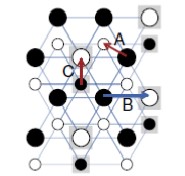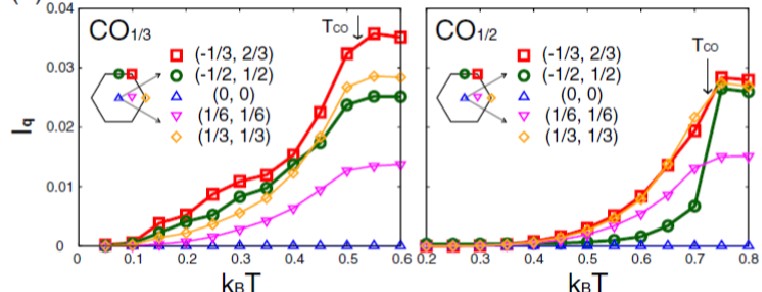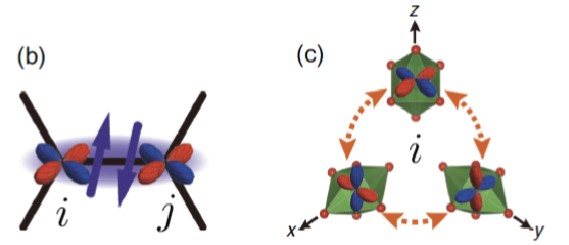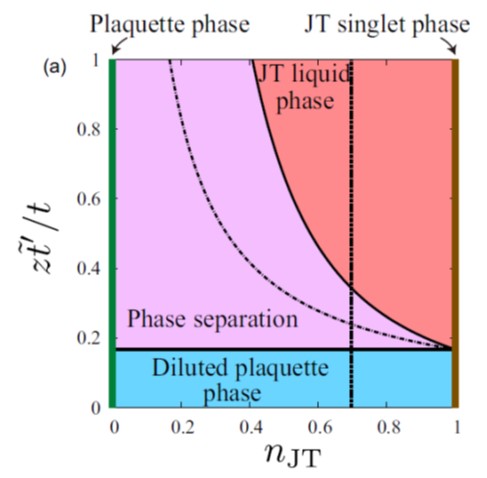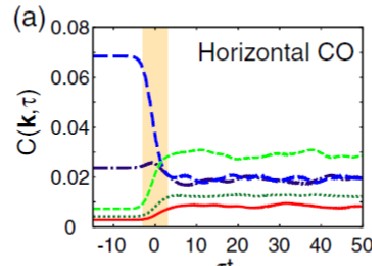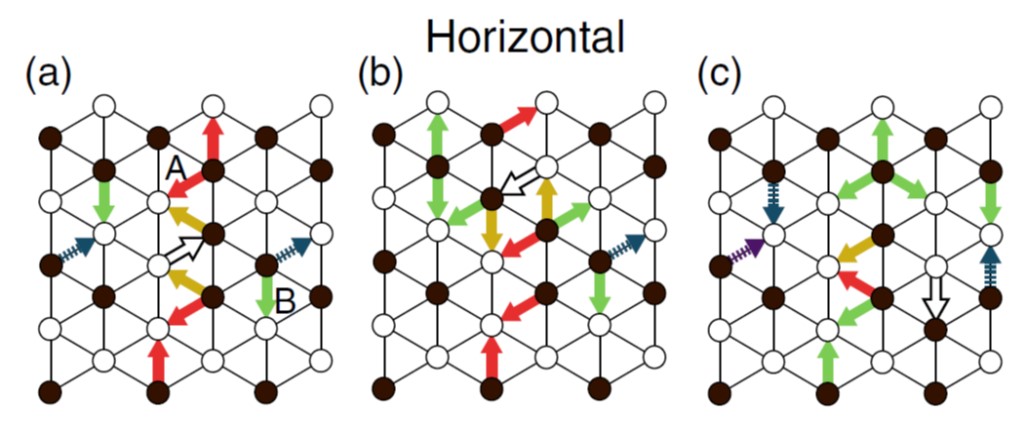Research Highlight
Charge Frustration and Fluctuation (J. Phys. Soc. Jpn. 84, 023703 (2015) )
When all relations can not be happy at the same time, this is termed ``Frustration".
Magnetic frustration has been examined for a long time, and one well known example is an antiferromagnet in a triangular lattice.
On the other hand, less is known about the charge frustration.
In this research, an interacting electronic charge and frustration are examined, and a peculiar charge fluctuation is discovered.
In the present theoretical model, two kinds of charge ordered states, ``a classical charge order" due to the classical interactions, and ``a quantum charge order" due to the quantum effect, are realized.
We find that charge fluctuation in the quantum charge order remains down to low temperatures and does not show remarkable momentum dependence.
These results might be observed by optical and x-ray spectroscopies.
|
|
``Quantum" charge order. |
Fluctuations in ``quantum" charge order(right) and ``classical" charge order.
|
Orbital degree of freedom and a new type of Resonating Valence Bond State (Phys. Rev. 91 045117 (2015))
It has widely attracted that, when classical long range ordered states, such as, ferromagnetic and antiferromagnetic orders, are not realized in magnets, what kinds of quantum magnetic state are stabilized in low temperatures.
Resonating valence bond (RVB) state is known to be a candidate state, in which spin singlet states in nearest neighboring bonds move resonantly in a crystal lattice, and is famous in the relation to the origin
of the high transition temperature superconducting cuprates.
We find, in this research, a new type of the RVB state is realized in a honeycomb lattice magnet where the orbital degeneracy in magnetic ions and a dynamical coupling between the orbital and lattice degrees of freedom (Dynamical Jahn-Teller Effect) exist.
A theoretical model, termed a quantum dimer model, which is known for frustrated magnets, are derived
based on local units of the spin-orbital singlet dimer, where spin and orbital degrees of freedom are strongly entangle with each other, and the Jahn-Teller singlet, where the orbital is quenched due to the dynamical Jahn-Teller effect.
We find a Jahn-Teller liquid phase where the two local units move around quantum mechanically.
These results provide a possible scenario for the novel spin liquid state in Ba3CuSb2O9 discovered recently.
|
|
Spin-orbital singlet and Jahn-Teller singlet states. |
A phase diagram of the quantum dimer model.
|
Light changes electron lattice ((J. Phys. Soc. Jpn. 83, 123703 (2014))
When strong light is applied to a solid, electron and lattice are melted and temperature rises.
It is recently sutudied intensively what is happen before rising temperature after shining.
We study numerially this issue in an electron lattice in a triangular lattice.
It is well known that charge frustration occurs in this system where electronds do not favor to be arranged in neighboring sites.
After the light irradiation, we find another type of electron lattice appears before rising temperature.
This is attributable to the frustration effect both in the initial and photoexcited states.
We discover that light does not only break an order but also creat an order, and expect the experimental verifications of this prediction.
|
|
Time evolution of charge arrangements after light irradiation. |
Charge arrangements and frustration.
|
